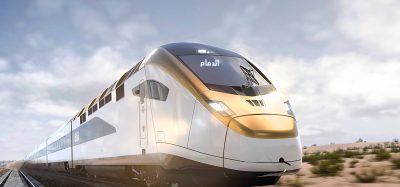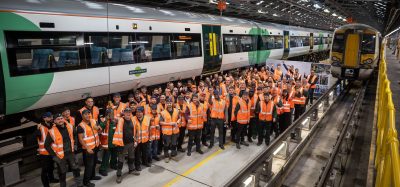Recognising the importance of high-speed rail in Norway
Posted: 28 May 2008 | | No comments yet
Studies commissioned by Jernbaneverket, the Norwegian National Rail Administration, show potential for developing a high-speed network designed for Norwegian conditions.
Studies commissioned by Jernbaneverket, the Norwegian National Rail Administration, show potential for developing a high-speed network designed for Norwegian conditions.
Studies commissioned by Jernbaneverket, the Norwegian National Rail Administration, show potential for developing a high-speed network designed for Norwegian conditions.
Norway was an early builder of railways. The first line, the 54km route from Oslo to Eidsvoll, opened back in 1854 – quite some time ago! As in other countries, the rail network was expanded to its present extent (over 4,000km) for two main reasons: to accommodate an existing need to transport raw materials to the coast, and to provide the population with a radically improved long-distance transport service.
Norway is very mountainous, and construction of high-quality infrastructure for road and rail transport has failed to keep pace with general social development and the resulting demand for sustainable mobility. Norway has developed a dense, high-capacity network of scheduled air services to a large number of small airports. On the ground, road and rail both follow the natural transport corridors in southern Norway, where the population is concentrated in mid-sized towns and villages spread along the long, wide valleys. Given Norway’s scattered settlement pattern and low overall population, the transport policy has tended to focus on securing road access for as many as possible of the smallest communities, possibly at the expense of a high-quality road and rail network serving the busiest national transport corridors.
Norway has a largely single-track rail network, which is heavily utilised and overloaded on its most densely trafficked sections. Low line speeds apply across the network. In the light of concerns about the environment and climate change, and the extensive development of high-speed rail networks in Europe, there has been public and political demand for a long-term strategy to modernise the Norwegian rail network and develop high-speed lines.
The decision to examine the potential for high-speed rail in Norway was primarily a political one. As part of the process of formulating a new National Transport Plan for the years 2010–19, the Norwegian parliament asked the Ministry of Transport and Communications to obtain a new, independent assessment of whether high-speed rail would be feasible in Norway.
The study
Jernbaneverket was tasked by the Ministry with commissioning an overall study of the possibilities and potential for building high-speed lines in Norway.
A German consortium led by the Stuttgart-based Verkehrswissenschaftliches Institut (VWI) won the contract to conduct a three-stage feasibility study. Stage 1 involved an overview of possible route corridors and some approximate market calculations. Stages 2 and 3 would look more closely at one or more routes. It became clear early on that Oslo–Stockholm was a special case that would have to be examined in association with the Swedish authorities, since a large part of the route is in Sweden.
In southern Norway, high-speed trains are primarily relevant to the transport corridors linking Oslo with the cities of Kristiansand/Stavanger, Bergen and Trondheim. These routes currently carry 1.2–1.5 million passengers annually. In a country of 4.5 million inhabitants, this represents a considerable level of travel activity. The high-speed study examined these markets in the first instance, but was also asked to assess route options, costs and the corridor market between the termini.
VWI began by assessing all the corridors. The starting point was to identify approximate route options that would make end-to-end journey times competitive with flying. The distances from Oslo, which vary between 400km and 600km, are appropriate for competition between high-speed rail and air. The Norwegian terrain presents major challenges in terms of routing, and it is important to identify optimum route options to keep costs down. Stage 1 concluded that all the routes might have market potential, but the consultants recommended the Oslo–Trondheim and Oslo–Göteborg routes for closer examination. However, the Ministry of Transport and Communications decided, following public debate and consultation, that all the main routes should be evaluated in stages 2 and 3 of the project.
Concept
Given Norway’s low overall population and similar frequency of travel to other European countries for all types of journey, VWI worked on the assumption that the end-to-end market was predominant and of prime importance. The concept developed was a single-track high-speed line for routes outside the central Østland region. Within the Østland region, new double-track lines designed for 200km/h operation will have to be built irrespective of whether a high-speed network is developed. For the single-track sections, provision was made for 2–3 intermediate stations where trains can pass and 2–3 dynamic passing loops where trains can pass at 160km/h. Maximum speed was set at 250km/h, and the calculations assumed that modified ICE 3 rolling stock would be used.
The journey time from Oslo to Trondheim and Bergen would be less than three hours, with 3–4 stops en-route.
The single-track concept will have limitations in terms of the number of trains in each direction and the number of stops. VWI’s assessment was that a two-hourly frequency, with hourly departures during the morning and evening peaks, would be adequate. In addition, there would be Intercity services in the central Østland region for journeys within a one-hour radius of Oslo.
It is assumed that freight services will not run on the high-speed lines but will continue to use the conventional network. With passenger rolling stock only, gradients can be adapted more easily to the Norwegian terrain. The route to Trondheim is envisaged as following the Østerdalen valley, which offers significantly easier construction than the alternative routes. However, there is scant population on this corridor between Hamar and Trondheim.
Costs
A key component of the studies was to obtain a good overall cost estimate for the various route options. Norway is a high-cost country, and construction is complicated. In a lot of places, especially on the routes into Western Norway, the lines will be through tunnels. An uncertainty analysis was performed on the cost estimates for all routes. Given the overall nature of the present studies, the range of uncertainty in the cost estimates is large. For the Oslo–Trondheim route, the estimate is NOK 40–80 billion; for Oslo–Bergen via Hallingdal, NOK 55-110 billion.
There is much discussion in Norway as to whether the cost of building high-speed lines is higher than in the rest of Europe. This is a complex debate, since the topographical and geological conditions are so very different. In many places in Europe, much of the trackbed has to be filled after excavation, and any necessary tunnels must be concrete-lined. In Norway, there is a great deal of rock of varying quality, but largely good. We have a high level of expertise in conventional tunnel building, and with good-quality rock the excavation cost is low. However, all the necessary infrastructure and safety installations inflate the cost of tunnel building in Norway. Where the rock quality is poor, securing the tunnel will also push up the costs.
In association with Norwegian experts, VWI examined various route options in Western Norway – some of the world’s most demanding terrain in which to construct high-speed lines. The Stavanger–Bergen route in particular will have to be almost 80% in tunnel, with a large number of bridges and viaducts on the remaining sections. The cost in this case will probably be in excess of NOK 100 billion. Although this route serves a large market by Norwegian standards, it will not be a natural priority for further analysis.
Effects
The development of high-speed train services in Europe has shown that rail is the future mode of transport for journeys of 150-600km. The environment, mobility and comfort are key factors. It has also become apparent that new high-speed train services produce a more mobile workforce and can contribute to regional development. All these effects are equally relevant in Norway, but in comparison with densely populated regions of Europe, there are significant differences. Traffic congestion and tailbacks are generally much less severe in Norway than in many European countries. Consequently, there will be strong competition between high-speed rail and the private car even in the future, when the car will still be an attractive option. Personal income levels are high, cars are becoming increasingly environmentally-friendly, and convenience and comfort are important in a country with a climate like Norway’s. The extent to which high-speed rail may affect business location decisions and contribute to regional development will be an interesting topic for further investigation. The study, already undertaken, discussed whether traditional cost-benefit analysis can adequately capture all the effects of new transport infrastructure. Our models are probably too restricted, capturing primarily the effects for users but not for society as a whole.
It will be interesting to study more closely whether high-speed rail can have an impact on regional development.
Conclusions
The studies undertaken show that establishing a high-speed concept in Norway would be feasible. It may also be desirable from a socioeconomic perspective, but better methodology needs to be devised to capture all the socioeconomic effects of high-speed concepts. Since the Norwegian market is small, the study shows that it may be best to focus on where the market is biggest: end-to-end traffic between Oslo and Stavanger, Bergen and Trondheim. None of these three routes clearly stands out as the highest priority. As far as alignments and detailed solutions for the routing of the lines are concerned, further studies are required before these can be set out. There are also many impacts beyond the scope of the present study. Winter conditions and the effects on flora, fauna and agricultural land must be considered as well.
Any decision to develop a route on a specific alignment is still a long way off, but there are many important aspects of such a project that need to be clarified in the years ahead.
OUT NOW: The Definitive Guide to Rail’s Digital Future
The rail industry is undergoing a digital revolution, and you need to be ready. We have released our latest market report, “Track Insight: Digitalisation.”
This is not just another report; it’s your comprehensive guide to understanding and leveraging the profound technological shifts reshaping our industry. We move beyond the buzzwords to show you the tangible realities of AI, IoT, and advanced data analytics in rail.
Discover how to:
- Optimise operations and maintenance with real-time insights.
- Enhance passenger services through seamless, high-speed connectivity.
- Leverage technologies like LEO satellites to improve safety and efficiency.
Featuring expert analysis from leaders at Nomad Digital, Lucchini RS, Bentley Systems and more, this is a must-read for any rail professional.







